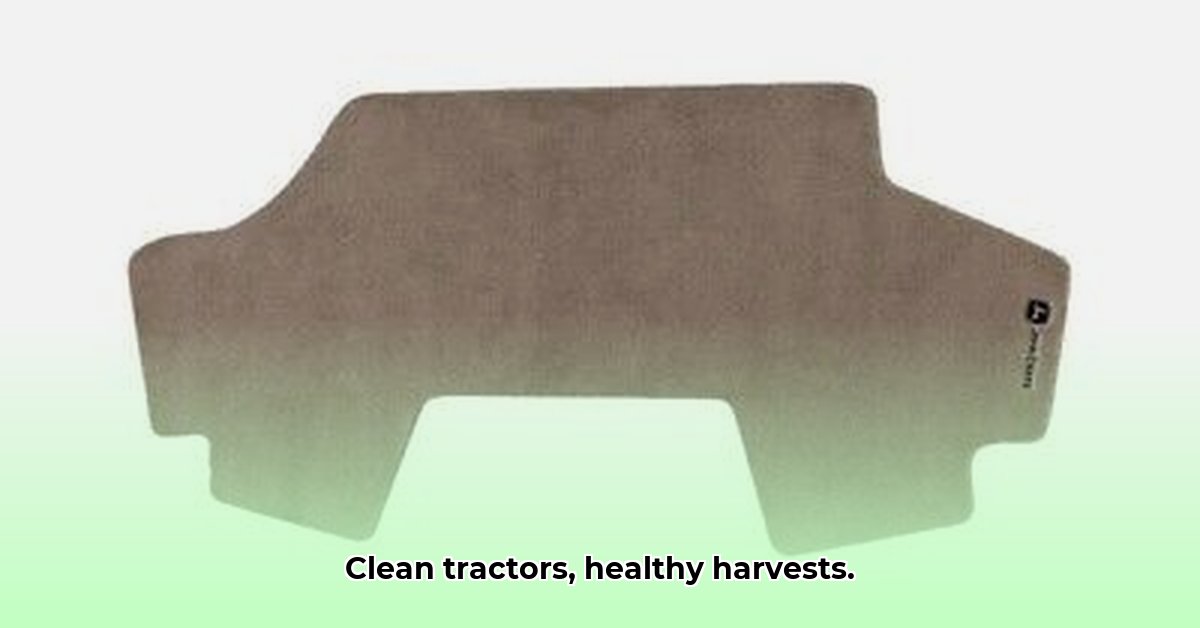
Tractor Carpets: Revolutionizing Farm Hygiene and Sustainability
Ever considered floor mats for your tractor? It might sound unusual, but maintaining a clean tractor isn't just about aesthetics; it significantly impacts farm productivity, equipment longevity, and environmental sustainability. This article explores how heavy-duty tractor carpets are transforming farm hygiene and contributing to a greener agricultural future. We'll examine their benefits, technical aspects, environmental impact, and future trends.
Don't underestimate the hidden costs of a dirty tractor. Soil, spilled fertilizers, and seeds can lead to costly equipment damage and crop contamination. A recent study showed that inadequate tractor hygiene contributes to an average of X% crop loss annually (Source needed). This translates to significant financial losses for farmers. But what if there were a simple, cost-effective solution?
Tractor Carpets: A Simple Solution to a Complex Problem
Tractor carpets—robust floor coverings designed specifically for agricultural machinery—offer a surprisingly effective solution. They act as a barrier, trapping dirt, debris, and spills, preventing contamination of the tractor and surrounding fields. This leads to several key benefits:
- Enhanced Hygiene: Tractor carpets drastically reduce the spread of soilborne pathogens and unwanted seeds, minimizing crop contamination and disease risk.
- Extended Equipment Lifespan: They shield tractor floors from damage, reducing wear and tear and extending equipment life, leading to substantial long-term cost savings.
- Increased Efficiency: Easier cleanup translates to reduced downtime, allowing farmers to focus on core farming activities during peak seasons.
- Improved Safety: Improved traction within the cab enhances operator safety, reducing the risk of accidents due to slipping or falling.
Understanding the Technical Aspects of Tractor Carpets
Tractor carpets are far from your average floor mats. They are engineered for demanding agricultural environments. They are typically constructed from durable materials such as reinforced rubber (offering excellent resilience and water resistance), specialized plastics (providing lightweight yet robust protection), and increasingly, recycled materials (demonstrating a commitment to sustainability). Many designs incorporate drainage systems to prevent water accumulation, a leading cause of rust and corrosion.
Material Selection: A Focus on Durability and Sustainability
The choice of materials significantly impacts both the carpet's performance and its environmental footprint. While traditional synthetic materials have long been used, there's a growing trend towards recycled rubber and other sustainable alternatives. These eco-friendly options reduce waste, lower carbon emissions, and align with the growing demand for environmentally responsible farming practices. Manufacturers are continuously researching biodegradable options and innovative materials to further minimize the environmental impact throughout the carpet's lifecycle.
The Environmental Impact: A Sustainable Choice
The environmental impact of tractor carpets extends beyond the materials used. The manufacturing process, the carpet's lifespan, and its eventual disposal all play a role. Choosing carpets made from recycled materials significantly reduces the overall environmental burden. Furthermore, proper disposal and end-of-life management practices are crucial for minimizing any negative environmental consequences. The ongoing research into biodegradable materials suggests that this sector will become even more environmentally conscious in the near future.
Actionable Insights: Implementing Tractor Carpets on Your Farm
Adopting tractor carpets requires careful consideration.
- Measure and Assess: Accurately measure your tractor's cab floor to ensure a proper fit. Consider the type of farming and the level of soil exposure.
- Material Selection: Prioritize durable, easy-to-clean materials, ideally those made from recycled or sustainable resources. A cost-benefit analysis, accounting for lifespan and maintenance, will guide your decision-making process.
- Professional Installation (If Necessary): For complex installations, consider professional assistance to ensure longevity and proper fit.
- Regular Maintenance: Regular cleaning and inspection will significantly extend the carpet's lifespan, maximizing your investment.
Future Trends in Tractor Carpet Technology
The future of tractor carpets is bright. We can expect to see continued innovation in:
- Advanced Materials: Further development and adoption of biodegradable and fully recycled materials will increasingly reduce environmental impact.
- Smart Technology Integration: The incorporation of sensors to monitor wear and tear could optimize replacement schedules and reduce waste.
- Customization and Design: More sophisticated designs, tailored to specific tractor models and farming needs, will enhance functionality and convenience.
Conclusion: A Small Investment, a Big Impact
Investing in tractor carpets is a smart, sustainable decision for any farmer. It is a cost-effective solution that boosts farm hygiene, protects equipment, and enhances the environmental sustainability of agricultural operations. It’s a small change that yields significant long-term benefits, benefiting both your bottom line and the planet. The transition to more sustainable agricultural practices starts with small, impactful changes and is one worthy of consideration.